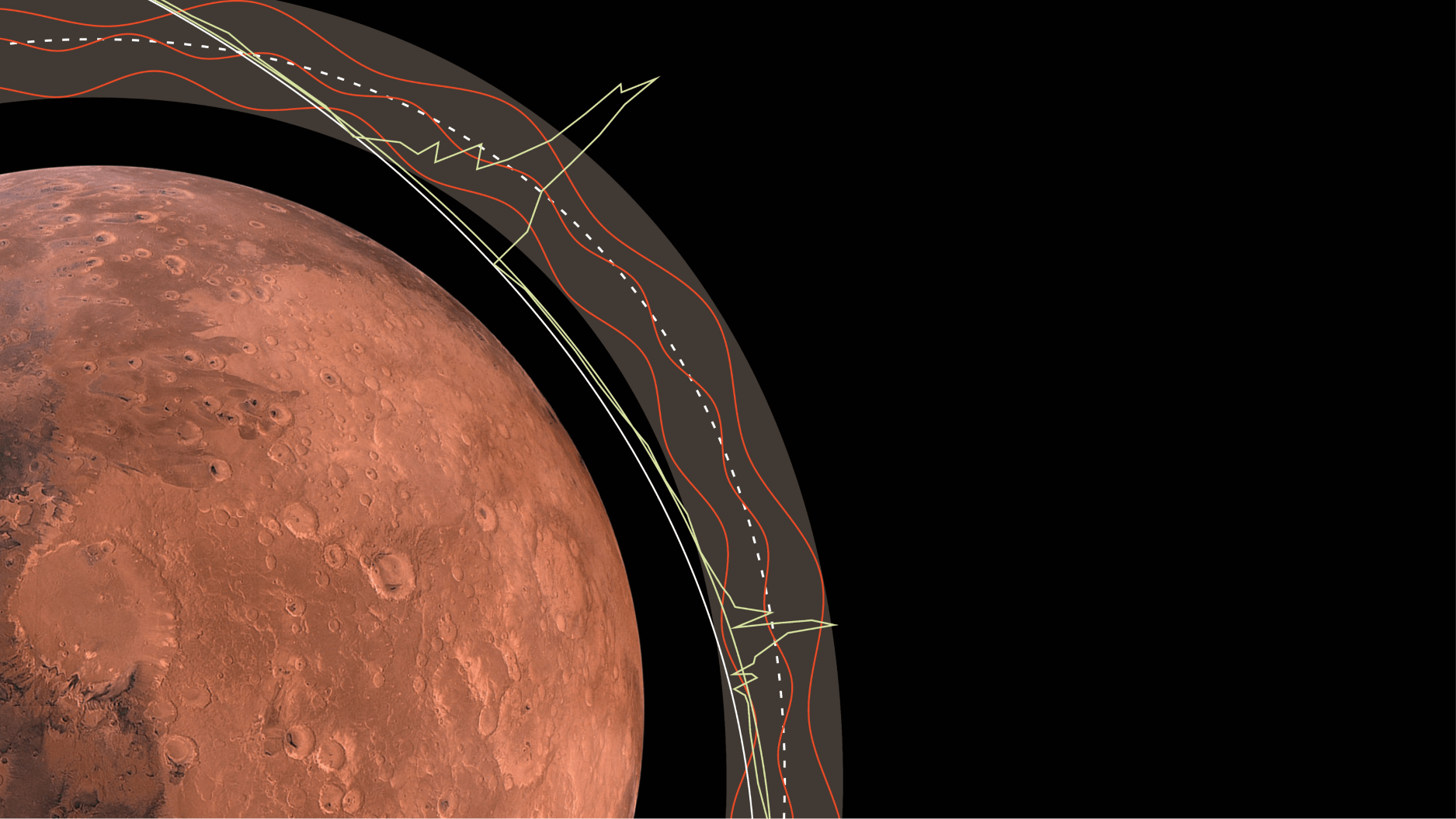Why 2020 Might Be The Best Geminid Meteor Shower Of All-Time

Learn how to get the best views no matter where you are.
Every year, no matter what else is occurring on Earth or in the heavens, you can rely on two meteor showers putting on a show: August’s Perseids and December’s Geminids. When the Moon isn’t out and sky conditions are favorable, the peaks of both of these meteor showers can lead to skywatchers all over the world seeing a hundred or more meteors every hour, making them two of the most reliable night sky events of every year.
But this year, a series of events are all aligning, simultaneously, that could make this the best Geminid meteor shower of all-time. The shower itself is strengthening on an annual basis, as the debris stream that creates the Geminids is thickening over time. It occurs very close to Earth’s perihelion: when our orbital speed is greatest, leading to faster meteors. And this year, it coincides with a new Moon, creating near-perfect sky conditions. Best of all, a total solar eclipse at the peak provides Chilean and Argentinian skywatchers with a unique opportunity: a chance to spot Geminid meteors during the moment of totality. Here’s how to make the most of it.
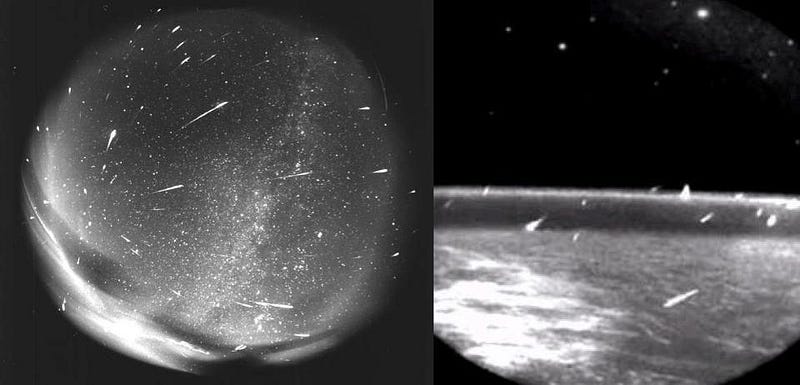
To watch the Geminid meteor shower, all you need is:
- a clear, dark sky,
- some warm clothing to make the December night bearable,
- and knowledge of where and when to look.
(Honestly, it’ll help if your neighbors turn off their holiday lights for a while, too.)
In all known cases, meteor showers arise from a parent body, like a comet or asteroid that’s passed close to the Sun and has heated up to the point where it’s produced tiny particles from a combination of offgassing, tidal forces tearing it apart, and solar wind and radiation striking these loosely-held surface particles. These tiny particles are known as a debris stream, and they get stretched out across the comet’s (or asteroid’s) orbit. Whenever planet Earth itself plows through that debris stream, these particles strike Earth at a tremendous speed — dozens or even close to a hundred km/s — creating the spectacular display known as a meteor shower.
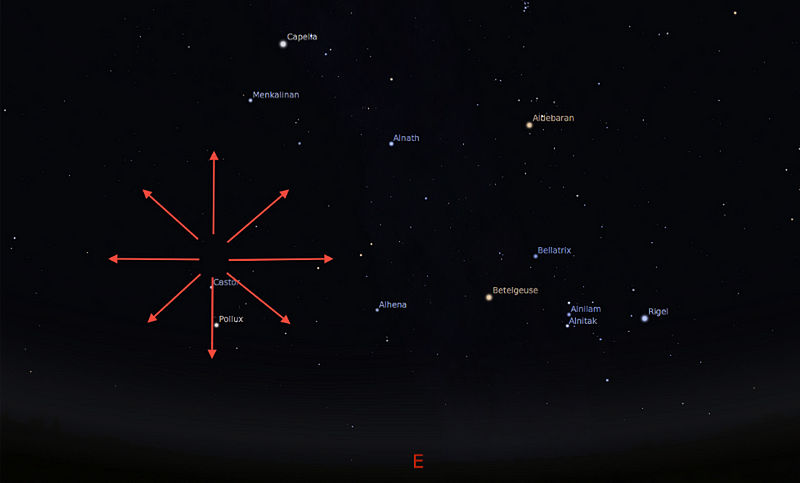
Because Earth itself orbits the Sun in a predictable fashion, it always strikes the same debris stream at the same angle and speed on a year-to-year basis. Moreover, since the Earth moves in the same direction with a one-year period, the meteors associated with a meteor shower always appear to originate from the same location in the sky: known as the radiant of the meteor shower. Meteor showers themselves bear the name of the constellation in which the radiant appears, with the Geminids being named for the constellation of Gemini: “the twins” in Greek Mythology.
The two “twin” stars are named Castor and Pollux, with orange Pollux being the 17th brightest star in the sky and blue Castor coming in at the 24th brightest. These stars rise around sunset from the Northern Hemisphere and around midnight in the Southern Hemisphere, while the Geminid meteors themselves all streak away from that point. They typically strike Earth at about 35 km/s, creating yellow-white streaks when they burn up in Earth’s stratosphere.

The Geminids are a little unusual for a meteor shower. Whereas many of them go back in history a thousand years or more, the Geminids were only first spotted in 1862. Initially, they were a modest meteor shower, with relatively small numbers of somewhat faint meteors. Over the century-and-a-half since they were first spotted, the Geminids have remained on the faint side — typically about +2 astronomical magnitudes fainter than the brighter Perseids which appear in August — but have become the most reliably productive meteor shower in our skies.
Every single year for the past 15 years, the Geminids have peaked at over 100 meteors-per-hour at its most active, with this year’s predicted peak to reach at least 150 meteors-per-hour, or roughly one expected meteor every ~24 seconds. The best viewing opportunity will come on the night of December 13/morning of December 14, with best viewing occurring from 10 PM local time onwards. Your best bet is to take in a wide-field view of the sky from a dark area, and not to worry about the Moon, which won’t appear until just minutes before sunrise.
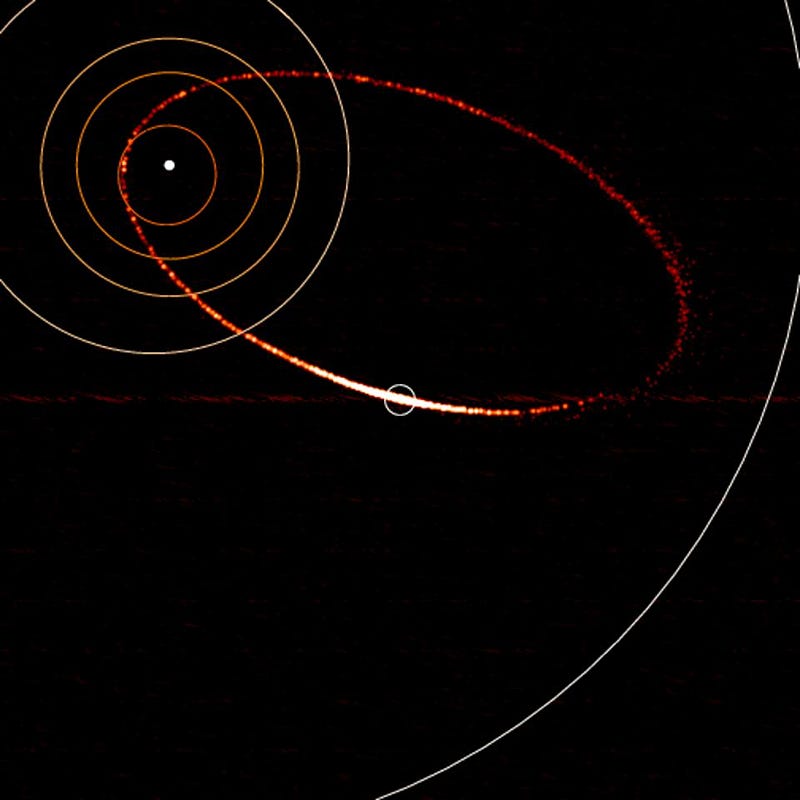
Unlike most meteor showers, however, the Geminids are special. Whereas most meteor showers originate from long-period comets, appearing most spectacular when Earth passes through the densest regions of the comet’s debris stream (i.e., closest to when the comet appears in our skies), the Geminids have no such constraints. Formed not from a comet but from an ice-rich asteroid — 3200 Phaethon — the Geminids get stronger every ~18 months or so, as that’s all the time required for Phaethon to complete an orbit around the Sun.
Along with January’s Quadrantids, the Geminids are the only named meteor showers to arise from an asteroid instead of a comet, with the tight orbit causing the meteors to move more slowly compared to the ones that originate from bodies that travel very far from the Sun. However, the fact that the Geminid debris stream thickens every time this short-period asteroid orbits the Sun gives the Geminids a chance to get more spectacular each and every year.
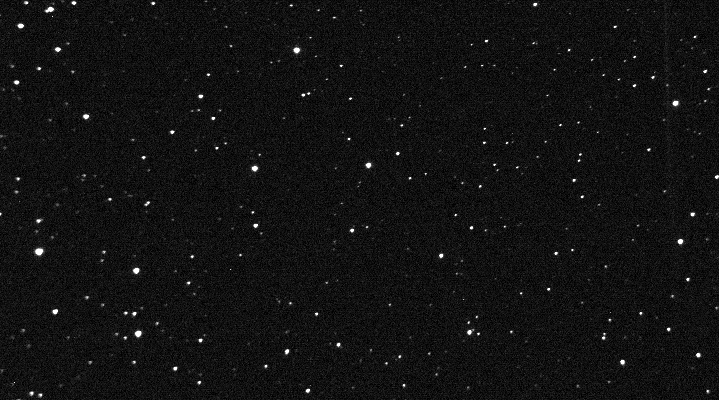
It was in the 1860s that we discovered where meteor showers came from in general, as John Couch Adams demonstrated the link between these terrestrial meteor showers and the celestial bodies that created them with the arrival of 1866’s Leonid meteor storm. Yet it wouldn’t be until 1983 that we discovered the body that caused it, where asteroid 3200 Phaethon became the very first asteroid to be discovered by a space satellite: IRAS, the infrared astronomy satellite.
In 2017, Phaethon passed within ~10 million km of Earth, and it’s currently close to perihelion: its closest approach to the Sun. It just passed by Earth’s orbit recently — within the last month or so — and so our current pass through this debris stream is likely going to be further enhanced over the last recent pass. Because of the way Earth’s orbit and this asteroids orbit line up, the Geminids get particularly strong on a triannual basis, with 2011, 2014, and 2017 all putting on stronger shows than average. 2020 might, if we’re lucky, be more of the same.
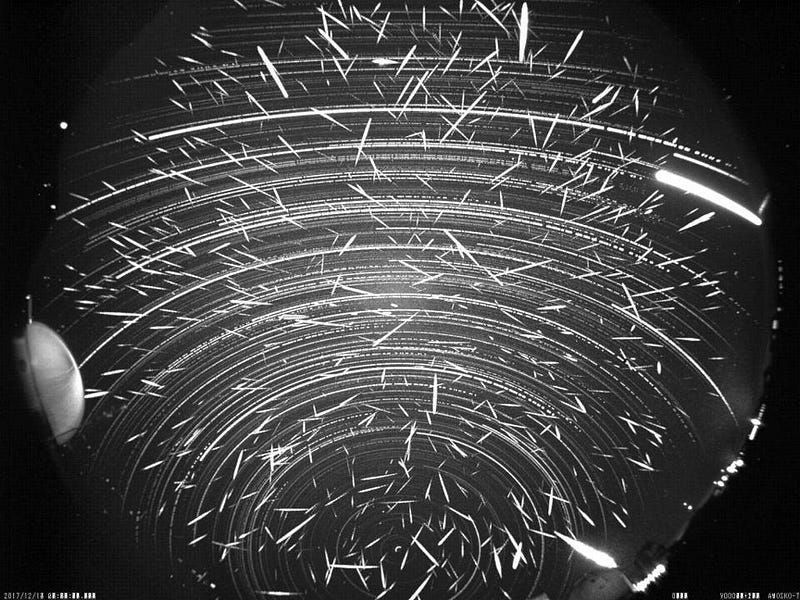
This year, the almost-new Moon will help out tremendously. Geminid meteors, because they’re numerous but relatively slow-moving, can get washed out by all different types of light pollution: city lights and the Moon being the two dominant causes. While there is no cure for city lights other than to drive to a secluded location, the new Moon occurs on December 14th this year: the same day as the Geminids’ peak. Without our bright neighbor in the skies, the Geminids are extra visible.
For those of you who’ve been paying extra close attention to the sky recently, you may have noticed that our most recent full Moon — on November 29/30 — came along with a penumbral lunar eclipse: the least impressive of all lunar eclipses, where the Earth’s shadow doesn’t quite fall on the Moon itself, but rather appears like a partial solar eclipse from the Moon’s surface, blocking some of the light from reaching parts of the Moon. Although the only visual effect from Earth is the subtle “limb darkening” of the Moon, these penumbral eclipses are often a signpost of something far more interesting occurring about 2 weeks later.
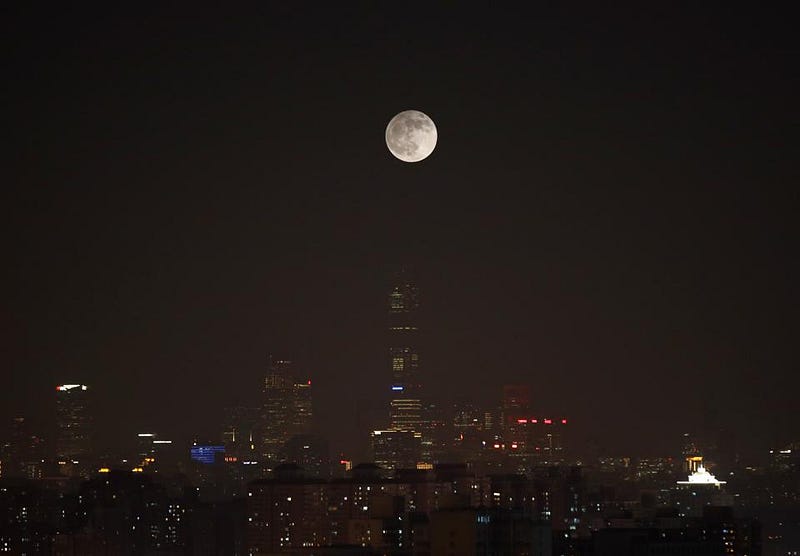
Because the Moon, Earth, and Sun are locked in a predictable, periodic dance, a penumbral lunar eclipse is often correlated with a solar eclipse occurring on the new Moon either just before or after the penumbral eclipse. This month is no exception, with December 14, 2020 gracing our planet with a total solar eclipse. The Moon, passing directly between the Earth and the Sun, will see its shadow trace out a path from west-to-east across the southern Pacific ocean, the continent of South America (hitting Chile and Argentina), and then the southern Atlantic ocean before it ends.
While a total solar eclipse is one of nature’s most spectacular sights in its own right, having a solar eclipse overlap with a major meteor shower presents a unique opportunity: a chance to catch a meteor — poetically known as a shooting star — during the day! Across the land masses where totality occurs, it will still be morning, so the constellation of Gemini will only be a few degrees below the horizon. If you get lucky where you are, you just might see meteors streaking across the darkened sky during your ~2 minutes of totality!
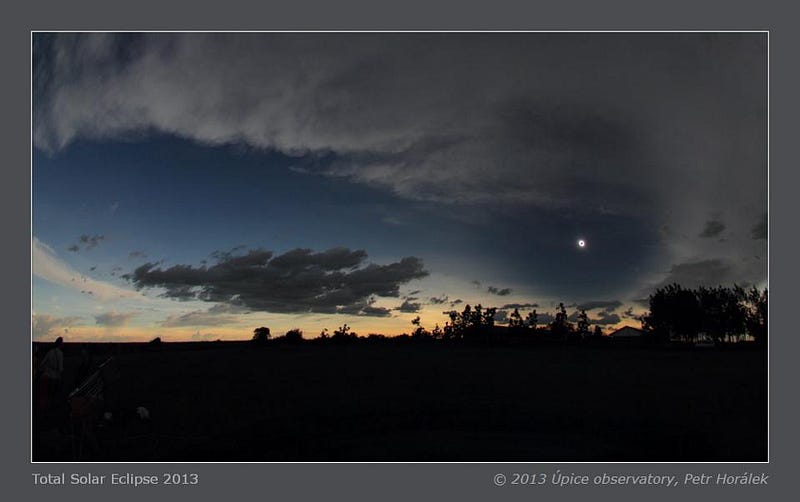
The current record for meteor rates during the Geminids was set during the 2014 shower, where we more than doubled the predicted rate of ~120 meteors-per-hour, observing a whopping ~253 meteors-per-hour at its peak. This year, the conservative estimate is that skywatchers will see ~150 meteors-per-hour at their peak, but a similar outburst could easily break the record, and might even crest the ~300 meteors-per-hour mark for the first time, a figure that no meteor shower has yet surpassed this entire century.
Of course, meteor showers fizzle, rather than sizzle, more often than not, which is part of the reason why the Geminids (and Perseids) are so spectacular: they’re reliable, year after year. The Moon won’t get in the way, other celestial events won’t interfere with this meteor shower, and the debris stream is so strong and robust that there’s no risk of a broken promise. The only thing that can stop you is the presence of clouds: the bane of skywatchers across the world.
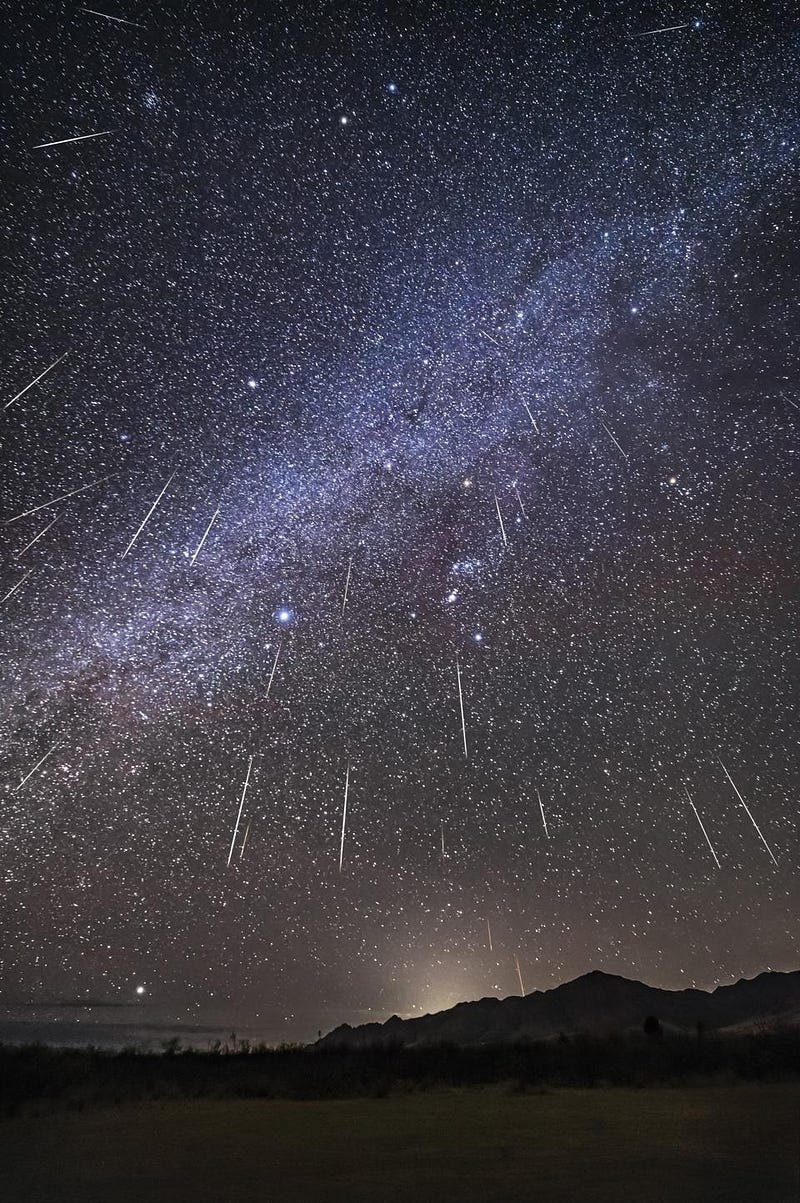
As the large parent body of the Geminids, asteroid 3200 Phaethon, continues on its tight orbit around the Sun, it will continue to expel matter and be torn apart, bit by tiny bit. The asteroid is about the size of the one that struck Earth 65 million years ago, causing our last great mass extinction. But instead of colliding with us all at once, this ~6 km wide asteroid is slowly dissipating in the presence of the Sun, creating tails of matter and ions but also an ever-thickening debris stream.
With each mid-December that rolls past, Earth slams through that debris stream, creating a show that gets progressively more spectacular with each set of orbits that regularly tick by. Over the past 15 years, the Geminids have regularly been one of the two best displays of meteor showers on Earth, and it’s eminently possible that 2020 will set a new record. The Moon, the Earth, and all of the other predictable conditions are just right for a spectacular show. If the clouds cooperate on December 13 and 14, treat yourself to the greatest natural show of the year. With all that 2020 has brought us, we can all use a cosmic treat like this one.
Starts With A Bang is written by Ethan Siegel, Ph.D., author of Beyond The Galaxy, and Treknology: The Science of Star Trek from Tricorders to Warp Drive.




